If you enjoy reading this article, why not check out our articles on How Strong Are Ants? Let’s Find Out! and Can Ants Affect House Foundations?
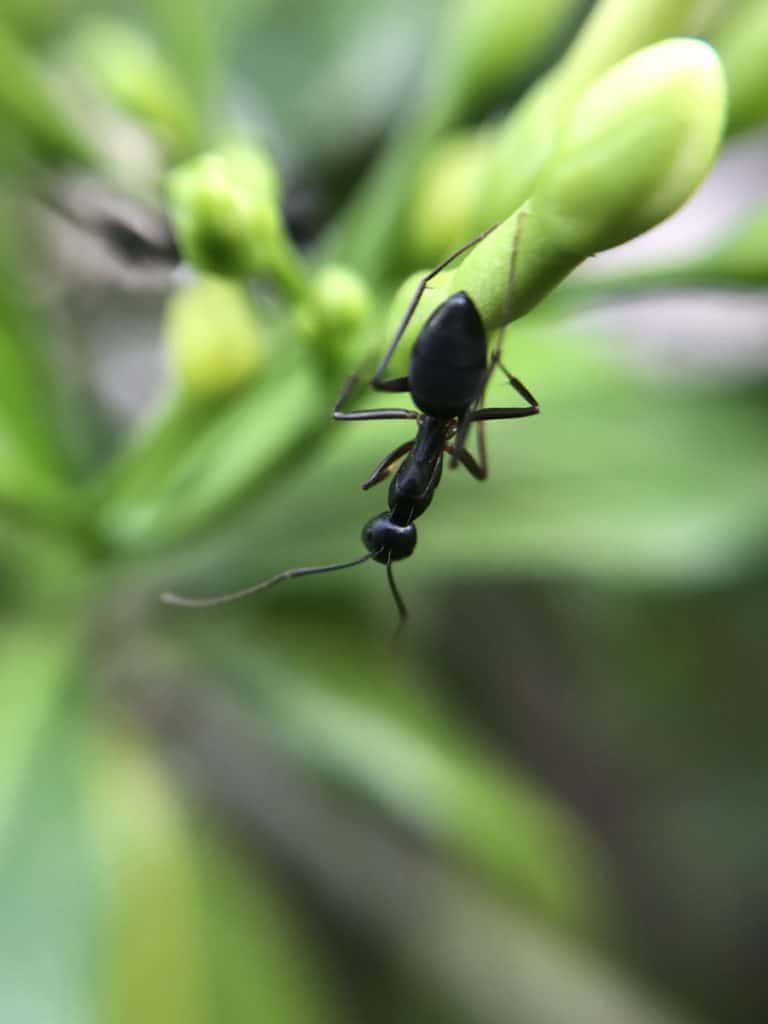
Do Ants Get Hurt When They Fall?
Even with the small size of ants, they pack a mean punch. I am not just talking about their ability to bite and sometimes cause extreme pain. I am also referring to some of their awesome abilities like strength, speed, and their uncanny ability to not die even after falling from high places. If you want to learn more about the incredible strength of ants, you may want to read our article How Strong Are Ants?
Do ants get hurt when they fall? No. With a terminal speed of only 3.9mph, even if you throw an ant from a high rise building, the slow descent speed allows them to survive the fall. It would only seem like a fall from a few centimeter’s height to the ant, because gravity can’t pull the ant faster to the ground.
It’s really fascinating that ants seem to not get hurt when they fall even from a high elevation. Sometimes it makes us wonder how much more this small creature can handle and if they have other surprise abilities we don’t know about. For now, we will look into ants not getting hurt after a fall further in the article.
Terminal Velocity
In this section, we will talk about the science behind how ants can survive a fall. In my answer above, I mentioned terminal speed. This is the maximum speed that a falling object can reach during free fall and can also be called terminal velocity. An average height and weight human has a terminal velocity of about 120mph. If for some reason a human managed to reach this speed during a fall and is about to hit the ground, the most likely outcome would be death.
Terminal speed (or velocity) = the maximum speed that a falling object can reach during free fall
Ants, on the other hand, are so small that the upward resistance provided by the air becomes so strong that the pull of gravity is countered immensely. This is the reason why the terminal velocity of ants is only around 3.9mph. Let us also factor in the outer skeleton of ants, which is designed to withstand some impact. So they really don’t get hurt when they fall.
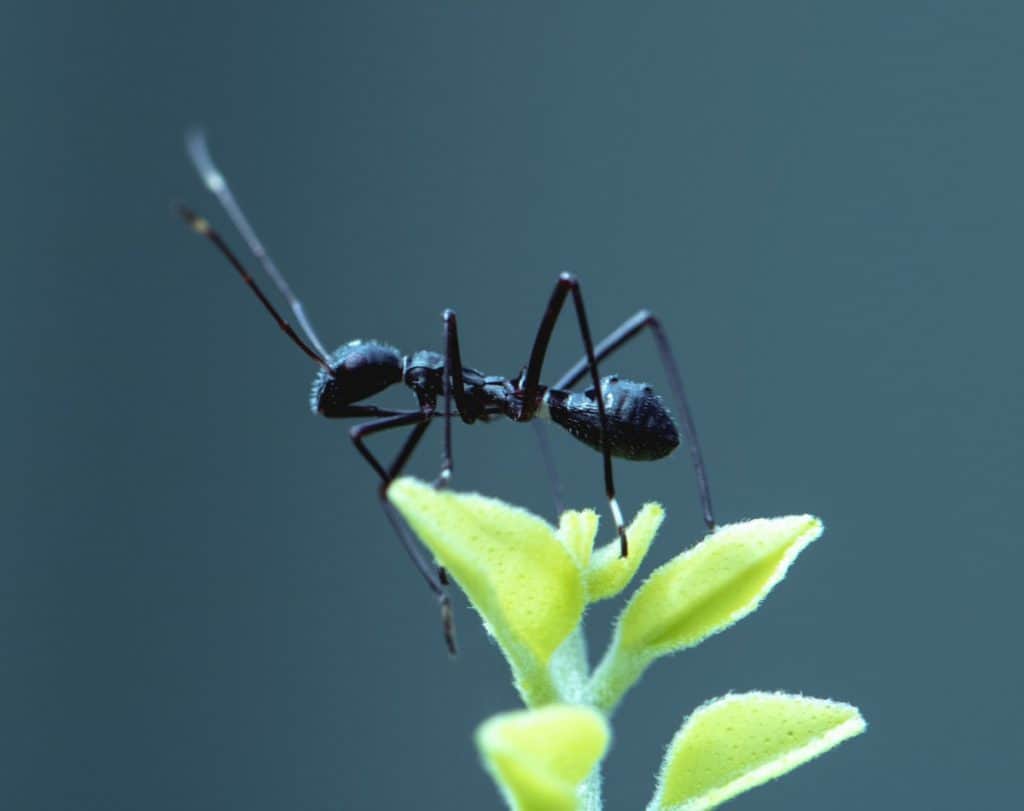
FYI: Small animals and insects have the uncanny ability to survive a fall from a high perch. This is because they have a non-fatal terminal velocity. Cats are among these creatures who can survive a fall. Once a cat reaches its terminal velocity of around 60mph, they would relax their muscles and spread themselves out and orient themselves to land on their feet. This spreading out technique allows the cat to increase drag and slow down their descent. It is said that a fatal terminal velocity is over 60mph.
Pressure Change Theory
Back in the ’90s, a Korean TV show said that ants will explode if they are dropped from a very high place (like maybe the Empire State building). This TV show attributed this explosion to the quick change in air pressure. However, an expert ecologist from the University of Oklahoma says that it is just a hoax.
He said that the theory of ants exploding due to changes in pressure might come from the fact that human ears pop to adapt to pressure changes. Ants, however, will not explode just because they are dropped from a skyscraper. He further states that ants can be found in elevation on 3,500 feet and seem to be doing just fine. So there really is no sense in thinking that ants will explode because of pressure changes.
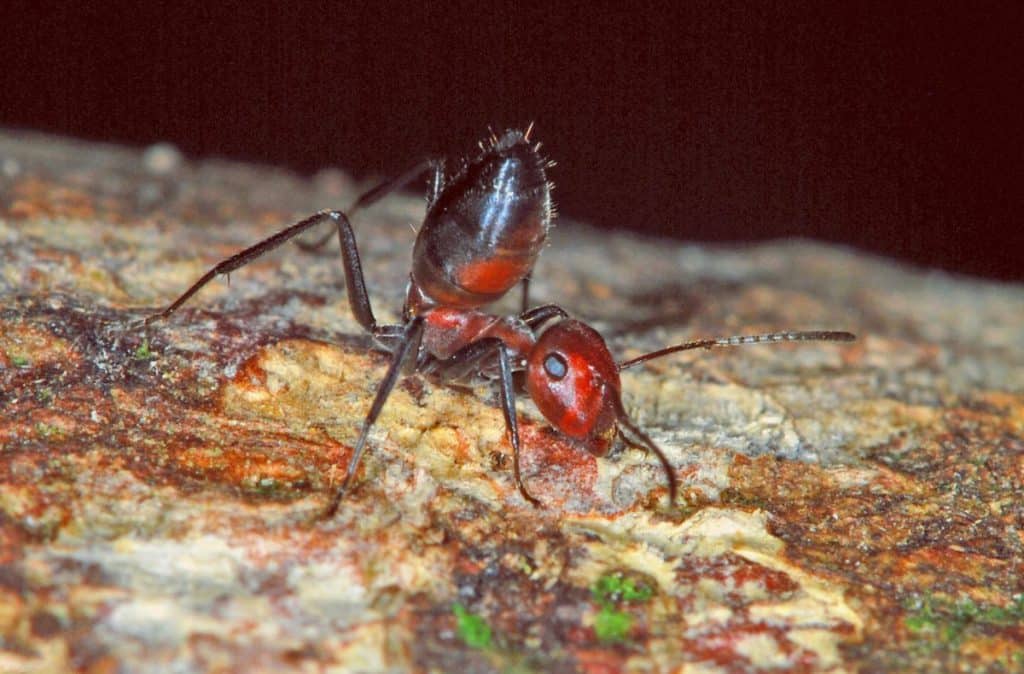
From sci-news.com
http://www.sci-news.com/biology/exploding-ant-colobopsis-explodens-05937.html
FYI: The only exploding ant I know of is a species of ant discovered in Asia. They are able to rip themselves apart to protect their own. This action of sacrificing oneself for the good of the many is scientifically known as autothysis (from the Greek word autos meaning “self” and thysia for “sacrifice”). The moment the ants perform this act they spray their surrounding area with poison, effectively stopping the invader surrounding him.
Gliding Ants
We cannot ignore the fact that there are ants that have wings and therefore can fly and glide. I wanted to give them a separate section because we already know that these ants will survive a fall from a high rise building and so will not get hurt. However, I’ve discovered a very interesting fact about them.
Glider ants are ants commonly found in rainforest canopies. Most of the time, these ants can be found nesting high up on a tree. They use their arboreal capacity to glide back to the tree they are nesting in should they accidentally fall off. Their wings are used to glide back on to the tree but they are not designed to sustain long flights. So they may survive the fall from the high rise, but it is doubtful that their wings will. Another interesting thing about these ants is that they use their feet to serve as a rudder. It allows them to stir themselves mid-air back to their tree as they glide.
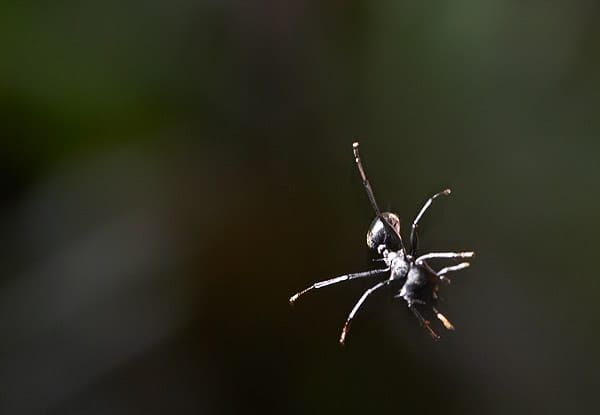
http://www.blogiversity.org/blogs/cstanton/archive/2010/04/24/7-spectacular-gliding-animals.aspx
Do ants feel pain?
As for pain, experts say that we don’t really know for sure. The theory going around is that ants sense that damage is done but feel no pain. The same experts say that this is called nociception.
You can think of it this way: the ant’s brain sends a signal that there is something wrong and the ant reacts accordingly. It is similar to a robotic program that mimics the reaction of us humans when we get physically hurt. You can also compare it to some form of simulation, like how avatars react when a fatal blow is delivered during a fight. However, there is no definite answer if ants really do feel pain because further studies are needed as to how insects experience and react to pain. No academic papers have been found regarding the neural system of insects and how these systems work in relation to pain receptors or if pain receptors are even there.
nociception = the sensory nervous system’s response to certain harmful or potentially harmful stimuli
In the event that you encounter these critters, it is still recommended to be gentle with them. After all, they are part of our ecosystem. We can never neglect the fact that even though they may seem like pests to us, their existence may have a positive effect on our environment that we don’t know about. An extinct species can greatly affect our ecosystem, just take the bees for an example. They are small but their existence allows us to enjoy most of the food crops we have today.
Interested in learning more about how different bugs experience pain? We’ve got an article for that! Everything You Need to Know About Bugs and Pain
Ant First Aid For Injured Comrades
Ants may be able to survive a fall, but there are other ways they can get injured. When injured, some ant species provide a sort of first aid medical attention to their injured mates. One such ant species are the Matabele ants. These ants conduct raids on termite nests to gather food for their colony. This causes some ants to lose a limb or two; they are not left behind though. The surviving party will carry their injured comrades back to their nest together with the food they gathered. Matabele nurse ants will then lick the wound of the injured and this helps the ants to survive.
Experts conducted an experiment on the Matabele ants. They denied some of the injured ants the opportunity to be licked by the nurse ants of the colony, and it showed that 80% of the controlled subject died. However, the group that was allowed to be licked had a 90% survival rate. This is why the experts assume that the licking might be some form of first aid given to injured ants.
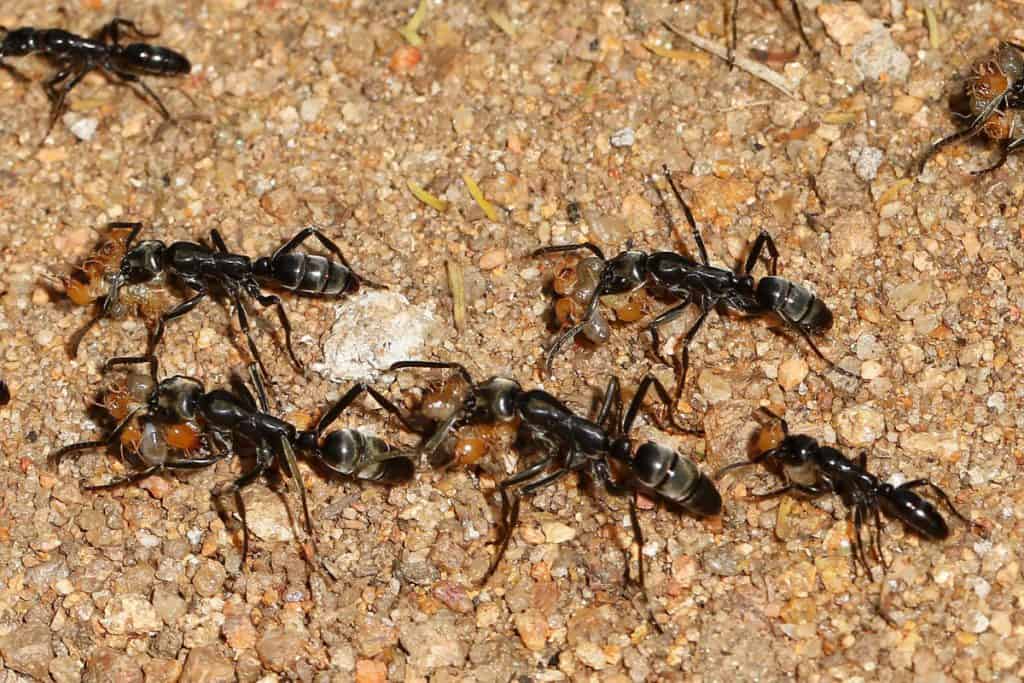
It is still unclear, though, if this licking act is a form of first aid, or if the ants are just cleaning the wound by licking the debris off. There is no definite answer to this yet but there are speculations that the licking might be a way to administer some antimicrobial substance to the wound that fights off infection and increase the survival rate of injured ants.
The ants that survived the missing limb injuries should not be pitied because as the experiment progressed, these ants were still able to go about their business in a normal manner after recovery. In fact, they are still able to reach optimal speed even if a limb or two are missing.
Conclusion
- To recap everything that is in this article:
- We first told you that ants don’t get hurt when they fall.
- We then explained that this is due to the small size of ants. Their size only allows them to reach a terminal velocity of 3.9mph which is far from the fatal terminal velocity of more than 60mph.
- We also mentioned that other insects and small animals have a non-lethal terminal velocity that allows them to survive a fall from a very high location.
- We also busted the theory of ants exploding in the middle of their fall from a skyscraper because of sudden changes in air pressure. Instead, we gave you the real facts behind exploding ants. There are species that perform a selfless act of self-destruction to protect their colony.
- Some ants have wings and this allows them to survive a fall but these wings are not designed to withstand long flights, therefore, the ant may survive but the wings may be another story altogether.
- Then we delved into discussing if ants have the ability to feel pain and we mentioned that ants know when they are injured but as for feeling pain, things are still a bit on the grey side.
- Lastly, we went further by discussing the first aid that some ant species give to their injured. We specifically used the Matabele ants as an example of this behavior.
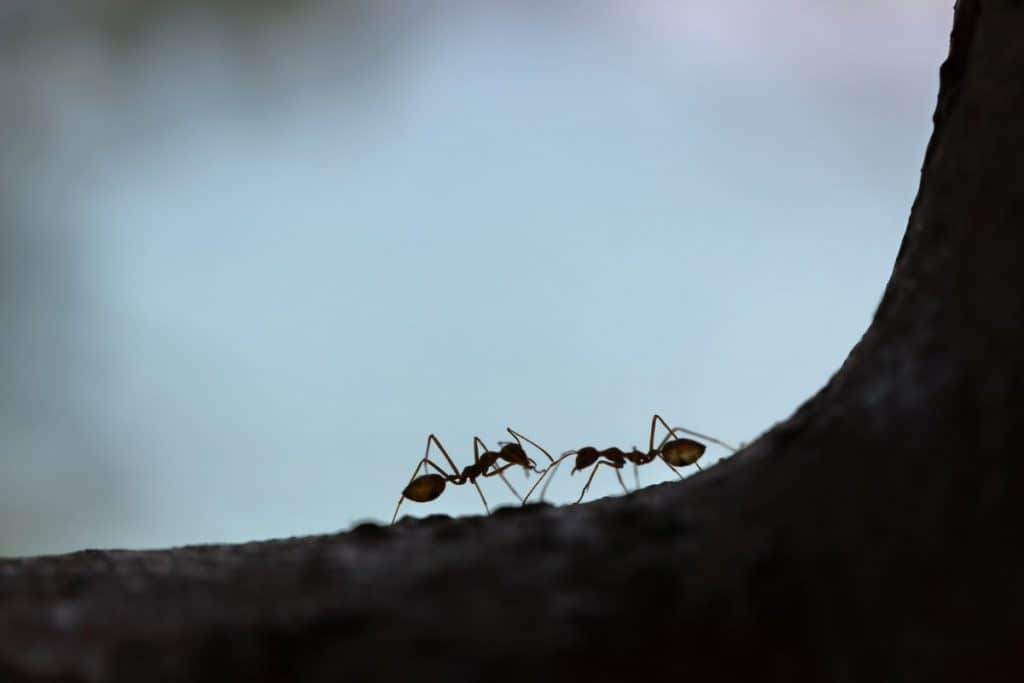
If you enjoyed reading this article, why not check out our articles on Can Ants Become Immune to Poison? and Can Ants and Worms Live Together?
Recent Posts
Tiny Black Bugs in Bathroom NO WINGS: What They Are and What to Do!
Finding tiny black bugs in your bathroom can be uncomfortable, to say the least. Especially if they are persistent, or they appear in very large numbers, which they often like to do. When it...
Tiny Black Bugs in Plant Soil - What Are They & What To Do About It
A short horror story: You get a new houseplant. You do your best to take care of it. You’ve ensured that it has the right soil, the right amount of sun, it gets enough water. And then one day, you...

